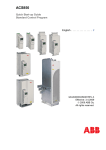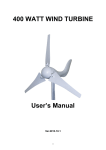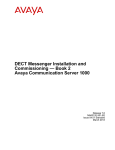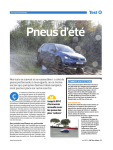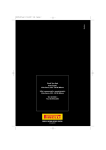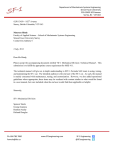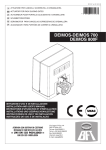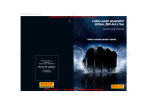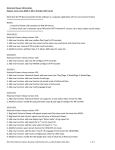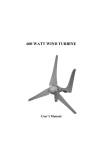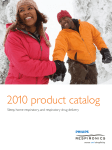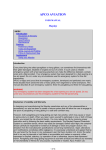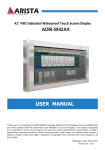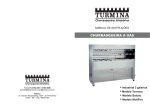Download Car tyres 205/60R16 reviews
Transcript
Car tyres 205/60R16 reviews - CHOICE Reviews and Tests Email Print Homepage A A Transport Blogs About Us Page 1 of 3 Campaigns Media and News RSS Cars Car tyres Car tyre 205/60R16 reviews MEMBER-ONLY CONTENT Car tyres 205/60R16 reviews We've tested 15 brands of car tyres, including models from Bridgestone, Dunlop, Continental and Michelin. Updated: 24 May 2013 Author: Chris Barnes 0 Like 1 Send 01.Introduction We test 15 full sets of tyres, ranging in price from $145 to $214 each. We've rated tyres for: ■ braking ■ cornering, and ■ rolling noise. On this page, you'll find: ■ Choosing the right tyres ■ Brands and models tested ■ How we test For more information about tyres, see Cars. Choosing the right tyres It’s no surprise that car tyres have poorer grip on a wet road than a dry one, but you might be surprised at how big a difference there can be between one set of tyres and another. Our tests show that most tyres perform well on dry roads – but on a wet surface, it’s a different story. Compared to the two top performers, the worst-performing tyre in the wet took an extra 4m to stop at 50km/h and up to an extra 10m to stop at 80km/h. In an emergency stop, that 10m distance could be the difference between pulling up a couple of car lengths short of the car in front and a trip to the auto repairer – or maybe the hospital. Our test results aim to give you this essential performance information. We look at 15 models of size 205/60R16, suitable for at least some versions of popular current and older-model medium-sized cars such as the Holden Cruze (test car), Ford Focus and Mitsubishi Lancer. According to the Australian Vehicle Standard, it is mandatory for all tyres to be stamped with the date of manufacture. You will find either a three- or four-digit code on either side of the tyre sidewall. Three digits are used on tyres made before 2000, and the first two digits stand for the week in the year and the last digit stands for the year. So a three-digit number of 078 stands for the seventh week in 1998. Four-digits are used on tyres made after 2000, and the first two digits stand for the week in the year, while the last two digits stand for the year. So a four-digit number of 0209 stands for the second week in 2009. Although there is no recommended time period in the standard regarding how long before you replace your tyres, we often see retailers recommending five to six years for the replacement period. Tyre ageing depends on the many variables of how it is used. http://www.choice.com.au/reviews-and-tests/transport/cars/tyres/car-tyres-205-60r16-revi... 18/06/2013 Car tyres 205/60R16 reviews - CHOICE Page 2 of 3 Things to consider when purchasing a tyre include the signs of age, such as micro splits in the tyre tread and sidewall that are visible up close, which is a result of oxidation of the tyre. How to read a tyre Each tyre has standard markings that allow you to pick the right type for your car. It’s a confusing mix of letters and numbers, and of measurements in mm and inches. Using the code for the tested size, P 205/60 R16 V and H, here’s what it all means: ■ P Passenger tyre. ■ 205 The section width (in mm), which is the distance between the tyre's exterior sidewalls when the tyre is fitted to the recommended rim, inflated to the recommended pressure, and not under load. ■ 60 The percentage, which describes the tyre’s profile or aspect ratio. It’s the ratio between the tyre’s section height (distance from the wheel bead seat to the top of the tyre) and its section width — in this case 60%. ■ R Radial, which is the most common construction method for passenger car tyres. ■ 16 Diameter (in inches) of the rim the tyre should be fitted to. ■ 92 Load rating index, which tells you the maximum weight one tyre can carry — in this case it means 630kg. Other examples: 80 (450kg), 84 (500kg), 86 (530kg), 88 (560kg), 94 (670kg), 95 (690kg) and and 96 (710kg). ■ V Speed rating index, which tells you the maximum speed the tyre can travel at (in this case 240km/h). Other examples: S (180km/h), T (190km/h), H (210km/h) and W (270km/h). Brands and models tested Bridgestone Turanza ER300 Continental Conti Premium Contact 2 Dunlop SP Sport LM703 Falken Ziex ZE912 Firestone TZ700 Goodyear Optilife GT Radial Champiro BAX2 Hankook Optimo K415 Kumho Ecsta LX Platinum Maxxis MA-P1 Vip Michelin Energy XM2 Green X Ovation Eco Vision VI-682 Pirelli Cinturato P1 Toyo Teo Plus Eco Yokohama C Drive 2 How we test Our cornering tests are carried out with the car’s traction control disabled. CHOICE does not recommend disabling traction control as it aids the car’s handling and safety in extreme circumstances. Cornering: Our testers, Peter Horvath and Chris Barnes, assess how well the tyres keep the car in a set lane at speeds of 80km/h and 85km/h in dry conditions, and of 70kmh, 75km/h and 80km/h in wet conditions, using a right-hand corner with about a 55m radius. The driver doesn’t know which brand of tyre has been fitted, and the tyres are tested in random order. The testers repeat the cornering test on a different day and in different random order. Braking: Using a GPS system, our testers measure the distance it takes to come to a complete standstill in emergency braking tests from driving speeds of 50km/h and 80km/h in both dry and wet conditions. Rolling noise: Our testers also carry out rolling noise measurements at the driver’s left ear at 50km/h and 80km/h, on a road with coarse surface. At each speed there is only 3dB difference between the models – so small you’re unlikely to notice it. However, while we measure noise at the very end of our harsh performance testing, the tyres are still relatively new and bigger differences may develop with increased wear. http://www.choice.com.au/reviews-and-tests/transport/cars/tyres/car-tyres-205-60r16-revi... 18/06/2013 What to buy - Car tyres 205/60R16 reviews - CHOICE Reviews and Tests Email Print Homepage A Blogs A Transport About Us Campaigns Page 1 of 2 Media and News RSS Cars Car tyres Car tyre 205/60R16 reviews MEMBER-ONLY CONTENT Car tyres 205/60R16 reviews We've tested 15 brands of car tyres, including models from Bridgestone, Dunlop, Continental and Michelin. Updated: 24 May 2013 Author: Chris Barnes 0 Like 0 Send 02.What to buy 3 CHOICE buys Continental Conti Premium Contact 2 Scored 83/100 | $184 83% Good points: • Nothing further to mention. Bad points: • Nothing further to mention. Bridgestone Turanza ER300 Scored 82/100 | $179 82% Good points: • Nothing further to mention. Bad points: • Nothing further to mention. http://www.choice.com.au/reviews-and-tests/transport/cars/tyres/car-tyres-205-60r16-revi... 18/06/2013 What to buy - Car tyres 205/60R16 reviews - CHOICE Page 2 of 2 Ovation Eco Vision VI-682 Scored 80/100 | $145 80% Good points: • Nothing further to mention. Bad points: • Nothing further to mention. http://www.choice.com.au/reviews-and-tests/transport/cars/tyres/car-tyres-205-60r16-revi... 18/06/2013 Compare results - Car tyres 205/60R16 reviews - CHOICE Reviews and Tests Email Print Homepage A A Transport Blogs About Us Campaigns Page 1 of 2 Media and News RSS Cars Car tyres Car tyre 205/60R16 reviews MEMBER-ONLY CONTENT Car tyres 205/60R16 reviews We've tested 15 brands of car tyres, including models from Bridgestone, Dunlop, Continental and Michelin. Updated: 24 May 2013 Author: Chris Barnes 0 1 Like 1 Send 03.Compare results Instructions Comparison table list ■ By default ALL tested products are listed. You can select up to five items to view in a side by side comparison. ■ Additional columns can be viewed by using the Next/Previous buttons. Using the filters ■ Use the filters to show only products that meet your specific requirements or which have the specific features you're interested in. Selecting filters automatically updates the Comparison table list. ■ The number shown in brackets represents the number of products displayed if you select that filter. ■ You can view additional filters by selecting the Show more filters button. Make a selection Filters Brand Price ($) Speed rating Origin Bridgestone (1) $0 - $150 (3) H (3) China (3) Continental (1) $151 - $200 (10) V (12) Czech Republic (1) Dunlop (1) $201 + (2) Indonesia (2) Falken (1) Japan (3) Firestone (1) Korea (2) GoodYear (1) ns (1) GT Radial (1) Thailand (3) Hankook (1) Kumho (1) Maxxis (1) Michelin (1) Ovation (1) Pirelli (1) More options (2) US tread wear rating US traction rating A (13) 260 (1) 280 (1) AA (1) No (1) 300 (1) 320 (2) 360 (1) 400 (2) 420 (2) 440 (1) 480 (2) 600 (1) No (1) More options (6) Toyo (1) Yokohama (1) More options (10) http://www.choice.com.au/reviews-and-tests/transport/cars/tyres/car-tyres-205-60r16-revi... 18/06/2013 Compare results - Car tyres 205/60R16 reviews - CHOICE Page 2 of 2 Compare products Select up to 5 items below. Then click the compare button Price ($) Overall Score Dry cornering score (%) Wet cornering score (%) Dry braking score (%) Wet braking score (%) 184 83 85 85 90 70 Bridgestone Turanza ER300 179 82 90 75 90 70 Ovation Eco Vision VI-682 145 80 90 75 85 65 GT Radial Champiro BAX2 156 77 90 70 80 65 Yokohama C Drive 2 172 76 90 70 85 55 Hankook Optimo K415 152 75 85 70 80 60 Michelin Energy XM2 Green X 202 75 85 75 80 55 Pirelli Cinturato P1 160 75 85 70 80 60 Kumho Ecsta LX Platinum 155 70 85 65 75 50 GoodYear Optilife 151 69 85 55 85 50 Firestone TZ700 145 67 75 55 80 60 Falken Ziex ZE912 214 65 85 45 80 50 Maxxis MA-P1 Vip 145 65 75 50 80 55 Toyo Teo Plus Eco 180 64 80 45 80 50 Dunlop SP Sport LM703 177 58 70 35 85 45 Compare Continental Conti Premium Contact 2 Using the table Scores: The overall score is made up of: Dry cornering: 30% Wet cornering: 30% Dry braking: 20% Wet braking: 20% The weighting for cornering is higher because you’re more likely to take a fast corner than having to do emergency braking. Price per tyre Recommended retail, as of May 2013. Tyre prices can vary widely, so shop around. Speed/load ratings can be found under How to read a tyre and for special tyre designs see Maintenance and design. Table notes Goodyear Optilife is exclusive to Kmart Tyre & Auto Service. na Not applicable. http://www.choice.com.au/reviews-and-tests/transport/cars/tyres/car-tyres-205-60r16-revi... 18/06/2013 What to look for - Car tyres 205/60R16 reviews - CHOICE Reviews and Tests Email Print Homepage A A Transport Blogs About Us Campaigns Page 1 of 2 Media and News RSS Cars Car tyres Car tyre 205/60R16 reviews MEMBER-ONLY CONTENT Car tyres 205/60R16 reviews We've tested 15 brands of car tyres, including models from Bridgestone, Dunlop, Continental and Michelin. Updated: 24 May 2013 Author: Chris Barnes 0 1 Like 0 Send 04.What to look for Unless you buy a new car every couple of years, you’ll probably have to buy a set of new tyres at some point — at the latest when the tread wear indicators show your tyres have reached the minimum legal limit. If you’re shopping for tyres, you don’t have to get the same ones your car left the factory with, nor the same size — check your owner’s manual or with a tyre dealer to find out which sizes you can fit. However, getting different-size tyres may mean you need different rims as well, and the whole thing can get costly. According to the Australian Vehicle Standard, it is mandatory for all tyres to be stamped with the date of manufacture. You will find either a three- or four-digit code on either side of the tyre sidewall. Three digits are used on tyres made before 2000, and the first two digits stand for the week in the year and the last digit stands for the year. So a three-digit number of 078 stands for the seventh week in 1998. Four-digits are used on tyres made after 2000, and the first two digits stand for the week in the year, while the last two digits stand for the year. So a four-digit number of 0209 stands for the second week in 2009. Although there is no recommended time period in the standard regarding how long before you replace your tyres, we often see retailers recommending five to six years for the replacement period. Tyre ageing depends on the many variables of how it is used. Things to consider when purchasing a tyre include the signs of age, such as micro splits in the tyre tread and sidewall that are visible up close, which is a result of oxidation of the tyre. Grip vs durability Each tyre design varies in its tread pattern and rubber mix and is a compromise between a number of requirements, such as grip and durability. Generally, a soft tyre provides better grip but also leaves more rubber on the road, so won’t last as long as a harder model. Racing tyres are an extreme example: they’re very soft and practically glue the car to the track, but may only last for part of one race — if that. These two tread patterns are very similar, and so are the tyres’ prices. Yet results can be quite different. Our cornering and braking test assesses the tyres’ grip, but not their durability. Tyre wear is difficult and expensive to test properly — several European consumer organisations and motoring clubs carry out a joint test, part of which is a convoy drive over 10,000km, using identical cars. Unfortunately, we can’t take part in their test, because most European tyres are different from Australian ones. And we can’t afford to run a similar test of our own. However, some tyres have a tread wear rating that can give you some idea of how long a tyre should last compared with others used in the same conditions. Image credits: Michael Hohl http://www.choice.com.au/reviews-and-tests/transport/cars/tyres/car-tyres-205-60r16-revi... 18/06/2013 Our findings and general information - Car tyres 205/60R16 reviews - CHOICE Reviews and Tests Email Print Homepage A Blogs A Transport About Us Campaigns Page 1 of 1 Media and News RSS Cars Car tyres Car tyre 205/60R16 reviews MEMBER-ONLY CONTENT Car tyres 205/60R16 reviews We've tested 15 brands of car tyres, including models from Bridgestone, Dunlop, Continental and Michelin. Updated: 24 May 2013 Author: Chris Barnes 0 1 Like 0 Send 05.Our findings and general information Braking In dry conditions, there’s a difference of about 1m between the best and worst performers from 50km/h, and of about 3m from 80km/h. These distances increase in wet conditions. The Kumho and Toyo models took the longest to stop our test car from all speeds and in all conditions, while the Bridgestone and Continental performed consistently well. The Kumho is the worst in dry conditions, while the Dunlop is worse in wet. Note that our stopping distances are best-case scenarios, due to a couple of factors: ■ Firstly, braking was helped by the anti-lock braking system (ABS) fitted to our test car. In an emergency situation, like the one simulated in our tests, you just slam on the brakes and the electronics ensure the car stops as quickly as possible without locking the wheels. ■ When driving a car without ABS, you have to adjust the force you apply to the brake pedal to prevent the wheels from locking up. This can be tricky, and it’s much harder to achieve stopping distances as good as those in our tests. ■ Our test driver knew he would have to brake — in an emergency, you won’t. Half a second’s reaction time at 50km/h adds 7m to the stopping distance. At 80km/h, it’s an additional 11m. Cornering You can’t directly compare the dry and wet cornering scores in our table since they’re based on a different combination of test speeds. The results at 80km/h (the speed used in both conditions) show none of the tyres offer nearly as much grip in the wet as on a dry road. The same is true for braking – so always slow down in wet conditions. Tread wear rating Tyre models that are marketed in the US have to have a tread wear rating as part of the Uniform Tyre Quality Grading System (UTQG) operated by the US government National Highway Traffic Safety Administration. If the same tyre is available here you can use the information too. It's printed on the tyre sidewall. Under the system, a tyre’s tread wear is measured under controlled conditions involving an 11,500km drive on a specified test course, and compared to a "standard" tyre with a rating of 100. A rating of 200 indicates that the tested tyre should last twice as long as the standard model. So the higher the number, the longer you can expect a tyre to last. However, the rating is comparative only. Real-life wear of a tyre depends on a number of aspects, such as the road surface, tyre pressure, wheel alignment and driving style. Also part of the UTQG, and printed on the tyre sidewall next to the tread wear rating, are: ■ A traction rating that grades the tyre’s wet braking traction (AA, A, B or C, with AA being best). ■ A temperature rating, which indicates a tyre’s ability to dissipate heat (A, B, C, with A being best). http://www.choice.com.au/reviews-and-tests/transport/cars/tyres/car-tyres-205-60r16-revi... 18/06/2013 Maintenance and design - Car tyres 205/60R16 reviews - CHOICE Reviews and Tests Email Print Homepage A A Transport Blogs About Us Campaigns Page 1 of 1 Media and News RSS Cars Car tyres Car tyre 205/60R16 reviews MEMBER-ONLY CONTENT Car tyres 205/60R16 reviews We've tested 15 brands of car tyres, including models from Bridgestone, Dunlop, Continental and Michelin. Updated: 24 May 2013 Author: Chris Barnes 0 Like 0 Send 06.Maintenance and design The right tyre pressure ■ Tyre pressure is measured in kilopascals (kPa) or pounds per square inch (psi). ■ Keep your tyres inflated to the pressure recommended by the car manufacturer — usually shown on a sticker inside the driver’s door frame, in the glovebox or on the petrol tank flap. ■ The car manufacturer’s recommendations refer to the pressure when the tyre’s cold, not after you’ve been driving for some time — so do your check at the petrol station at the start of your journey, not halfway through it. ■ When driving with a heavy load, such as a trailer, inflate your tyres to a higher pressure — check the sticker. ■ Driving with under-inflated tyres uses more petrol, adversely affects the car’s handling and may lead to tyre damage. ■ Check the pressure regularly — make it a habit each time you fill up with petrol. ■ And don’t forget to check the spare’s air pressure when you do the other tyres. Tyre maintenance tips ■ When you check the pressure, also look out for objects embedded in the tread, such as stones or glass. ■ Check for uneven wear, which could indicate a problem with the car’s steering or suspension. ■ Run your hands over the tread and sidewalls to identify any bubbles, cuts or cracks. ■ Keep an eye on the tyres’ tread wear indicators, which show the minimum legal tread of 1.6mm. The indicators are small bars spaced across the grooves of the tyre’s tread pattern. Replace your tyres when the tread level reaches the indicators — at the latest. ■ Rotate the tyres regularly — for example, at every service. ■ When putting on new tyres, have them balanced and a wheel alignment done. Special tyre design ■ Some tyres are one-directional, which means they’re designed to be fitted to the car so their tread pattern faces a particular way (usually marked with an arrow on the sidewall). Fitting them on the wrong side may affect the car’s handling and reduce the tyre’s life. These are usually premium tyres. If you use these and don’t have a conventional tyre as a spare, be aware that a one-directional spare only fits one side of the car. If you have to use it on the wrong side, drive carefully and replace the damaged tyre as quickly as you can. ■ Don’t confuse one-directional tyres with asymmetric models designed to be fitted to the rim so that a particular side (marked on the tyre’s sidewall) faces outwards. With these, the spare can replace any of the other tyres. ■ Some car models have an emergency space-saver (narrower) spare instead of a full-size one. If you have to use it, follow the instructions in your user manual. There’s likely to be a speed limitation, and you’re only supposed to drive on it for a short distance to get you home or to the nearest tyre fitter. If you use it over longer distances or at higher speeds, you may damage your car. http://www.choice.com.au/reviews-and-tests/transport/cars/tyres/car-tyres-205-60r16-revi... 18/06/2013










